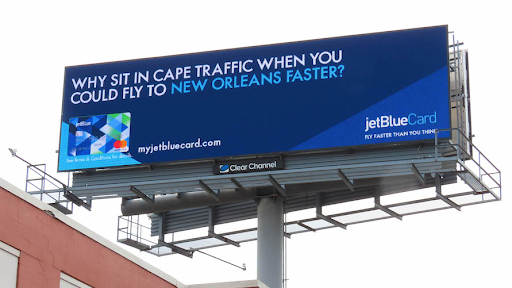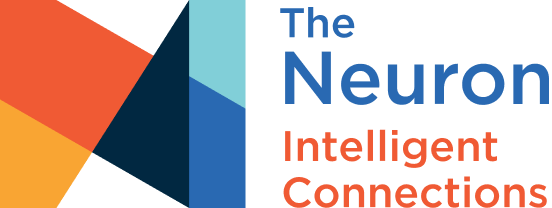Dynamic digital OOH is on the rise.
Far from being the preserve of big, international cities, dynamic ads are now displayed frequently on major highways, regional towns and public places across the country.
Programmatic digital out of home – the technology that underpins the purchase and display of dynamic digital advertising – constitutes an ever-increasing percentage of digital out of home (DOOH) advertising spend. According to mid-2021 figures from eMarketer, by the end of this year programmatic DOOH (pDOOH) will constitute 12.5% of overall DOOH spending.
By the end of 2022, it will constitute 16.4%.
But what is dynamic digital OOH, what is its relationship with programmatic buying methods, and why is it such a powerful tool for small businesses?
Ultimately, dynamic DOOH is about having the adaptability to serve messages that are relevant to consumers’ circumstances in a specific moment. If you can address consumers’ needs as they experience them, it makes it considerably easier to demonstrate your product or service’s value – and thereby get more out of your DOOH ad spend.
Below, we discuss how dynamic DOOH works and how you can use it to benefit your business.
What Is Dynamic Digital OOH?
Dynamic digital OOH (or ‘dynamic DOOH’) is Digital Out of Home advertising that brands can optimize and update in real time, in response to real-world circumstances, contexts and events (such as changes in weather conditions, sports results, or news event, for example).
This allows advertisers to use dynamically enabled digital media, including digital billboards, networked digital screens, place-based media and digital street furniture to display truly dynamic content campaigns based on contextual relevance.
Let’s say you run a café. Most of your business consists of passing trade and you want to maximize your appeal to passers-by using digital street furniture and place-based media.
Using dynamic DOOH ads, you could run dynamic campaigns to change which ad you display on digital screens depending on the temperature or weather data, so that you emphasize cosy hot drinks during cold snaps and iced smoothies during warmer weather.
Or, you could target your deals depending on time of day. For example, you could advertise take-out sandwich and hot drink deals during the morning commute and promote kids’ deals as soon as school finishes.
This is just the tip of the iceberg. Advertisers can run a dynamic campaign based on any number of factors.
In the example below, JetBlue Card uses the grind of heavy vacation traffic from Boston to Cape Cod to promote alternative transport options and destinations.

(Source: grandvisual.com)
Elsewhere, businesses have used ticket sales, pollen count and footfall data to change their DOOH ads based on need.
Why Should You Use Dynamic Digital OOH?
Dynamic OOH advertising offers plenty of advantages over traditional OOH because of how adaptable it is. It is significantly easier to adjust your messaging in response to your audience’s situation using a dynamic campaign than a static one.
Dynamic Digital OOH Offers Huge Reach While Targeting Ready to Buy Audiences
Traditional OOH advertising has large-scale reach but offers no flexibility in the message you offer potential buyers. After many time-consuming negotiations, ads are printed and stuck on billboards and other outdoor displays, where they will remain, unchanged, for weeks or even months on end. With traditional OOH advertising, once you’ve chosen an ad or promotion to run, you’re stuck with it.
For many businesses – small businesses in particular – this sort of rigidity isn’t helpful. They need the flexibility to change their messaging – and a platform that allows them to do so easily.
Dynamic DOOH advertising is the answer.
Utilizing a powerful programmatic DOOH platform, businesses can tailor their messages to specific audiences on the fly based on real-time data and increase the ROI on their media spend significantly as a result. With dynamic DOOH, sales increase because you can target audiences much more effectively.
Dynamic Digital OOH Cuts Through Irrelevant Digital Ads
Emphasizing your product’s relevance to a consumer’s situation is rapidly becoming essential.
This is due to a saturated online advertising environment that bombards mobile screens non-stop with ad content no matter where they venture online.
The result?
Consumers have become increasingly adept at blanking out ads which aren’t relevant to their situation.
Around 49% of young adults notice messages that are more relevant to their current situation and 40% of adults in general want more relevant content from brands that advertise to them.
Dynamic DOOH advertising has two advantages here:
- Ads are removed from a crowded, oversaturated online space and feel less invasive as a result
- Ads can be updated in real time to reflect consumers’ situations, immediately cutting through to potential buyers
Is Dynamic Digital OOH the Same as Programmatic Digital OOH?
The short answer here is – not exactly, but many people use the two terms interchangeably.
Programmatic DOOH platforms enable dynamic digital OOH campaigns. The long timescales and resource-intensive manual processes involved in traditional DOOH buying make dynamic DOOH advertising largely unfeasible for all but the biggest companies.
Programmatic buying platforms on the other hand, automate the bidding process for DOOH campaigns. Buyers place bids on inventory based on certain conditions (for example temperature, weather, traffic conditions, time of day, etc.) and ads only go live when those conditions can be met.
For instance, continuing with the café example above – the owner could automatically bid on a selection of nearby street furniture to advertise hot drinks provided the temperature dropped below a certain level.
Overall, as well as opening up new possibilities for audience targeting, programmatic DOOH also removes the time and budgetary constraints of traditional, slower buying methods involving intermediaries.
Find the Buying Platform for Dynamic DOOH Advertising
To run dynamic DOOH campaigns successfully, you’ll need to find a platform that:
- Offers an intuitive user interface that allows real-time updates to your ad creative in an engaging and easy way
- Connects you to a wide range of digital billboards, digital street furniture, digital signage and other inventory
- Collects real-time campaign data for analysis and optimization
The Neuron is a Demand Side programmatic DOOH platform that directly connects advertisers to an extensive range of media owners and their inventory – and premium inventory.
With single-click processes and a range of real-time reports, it opens the dynamic DOOH door to a whole new market of small businesses and agencies.

